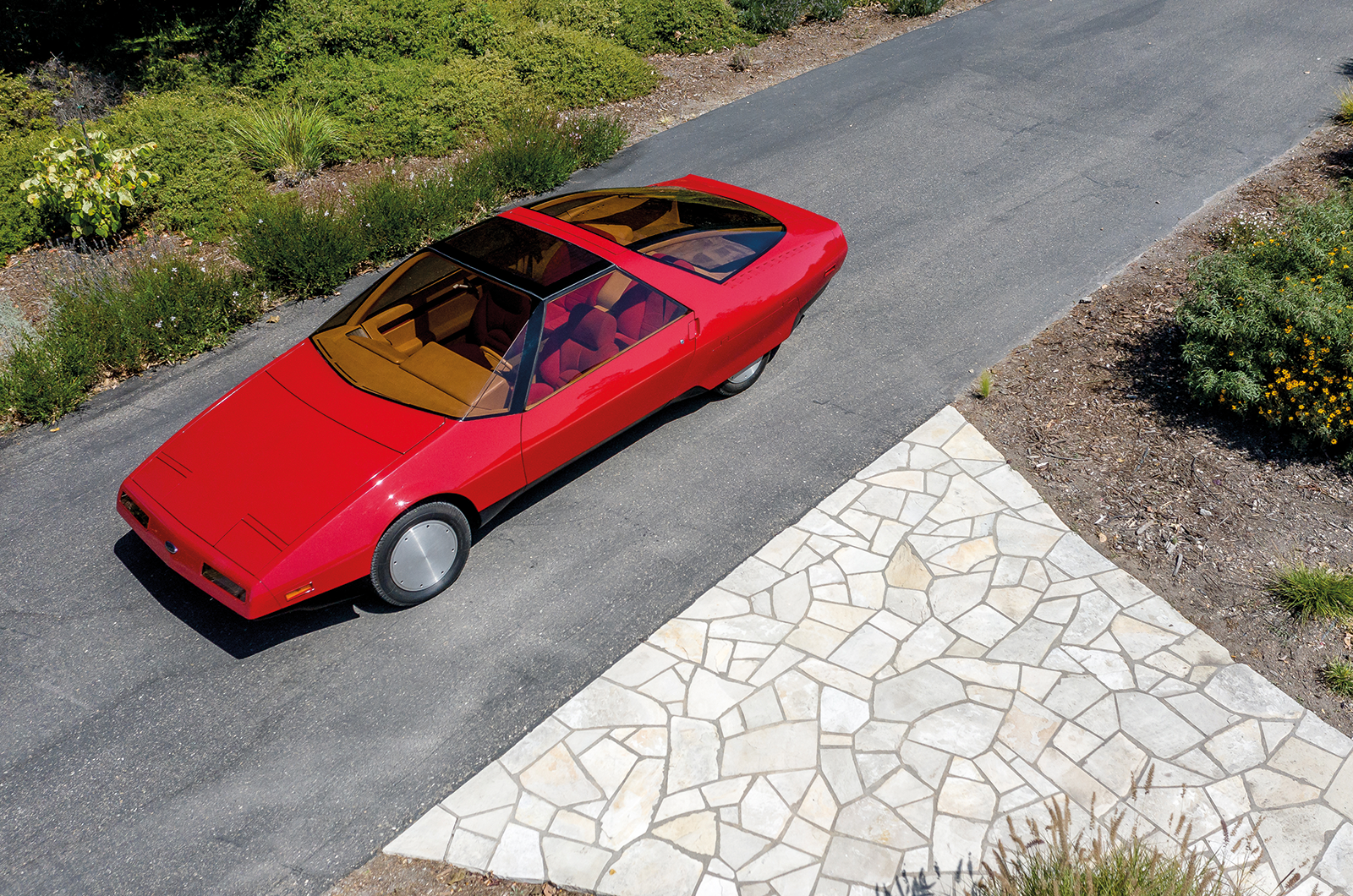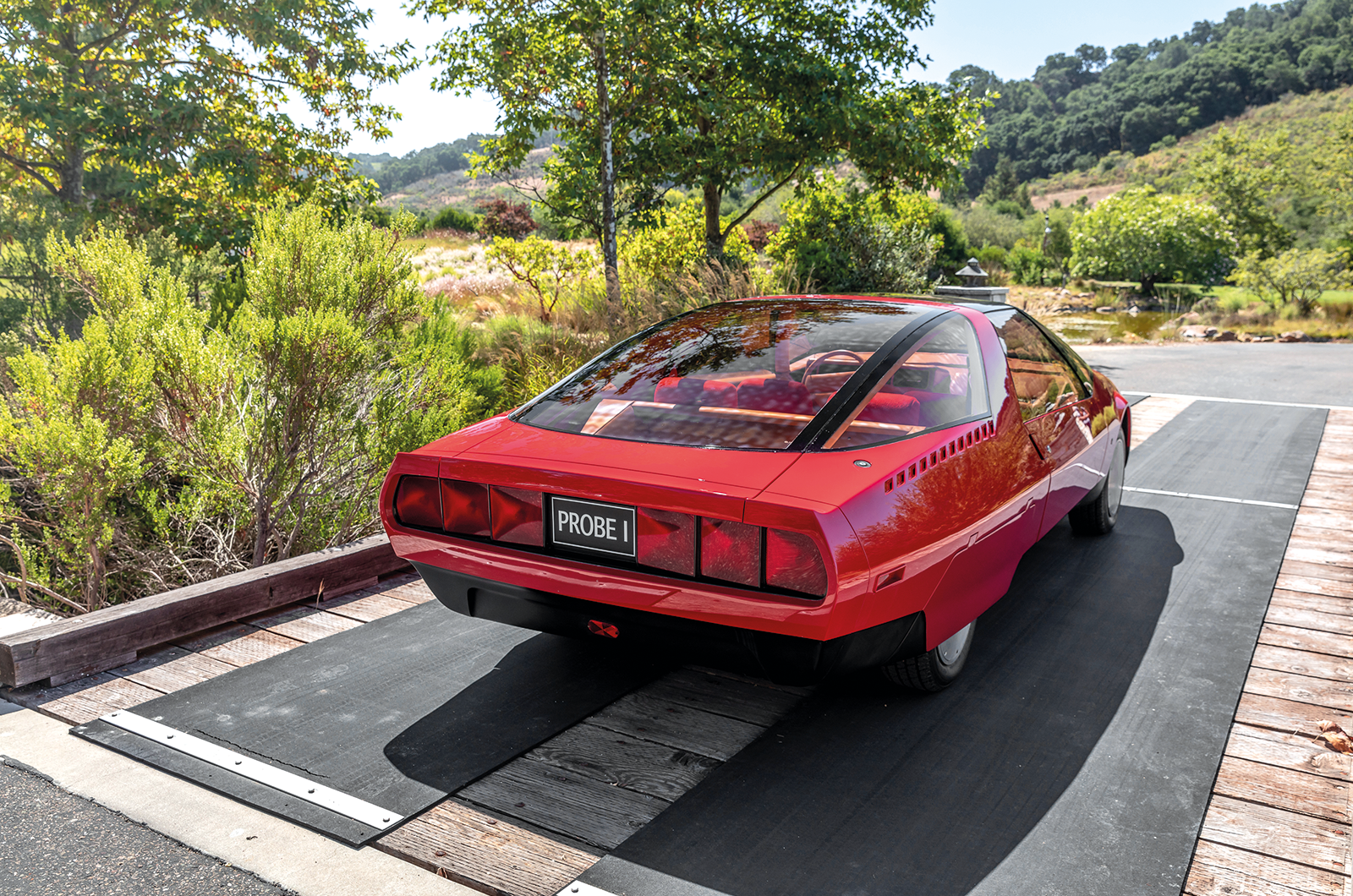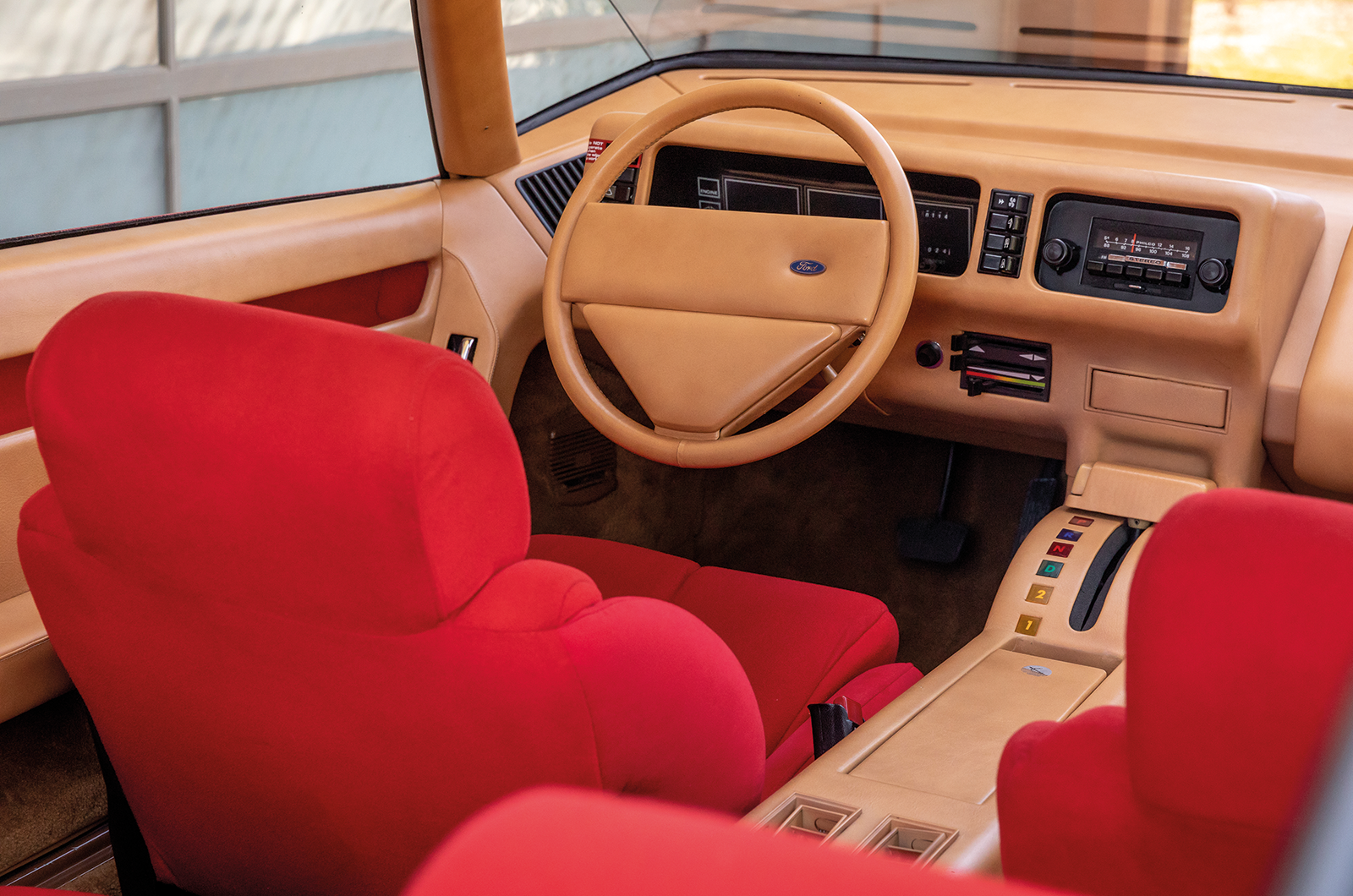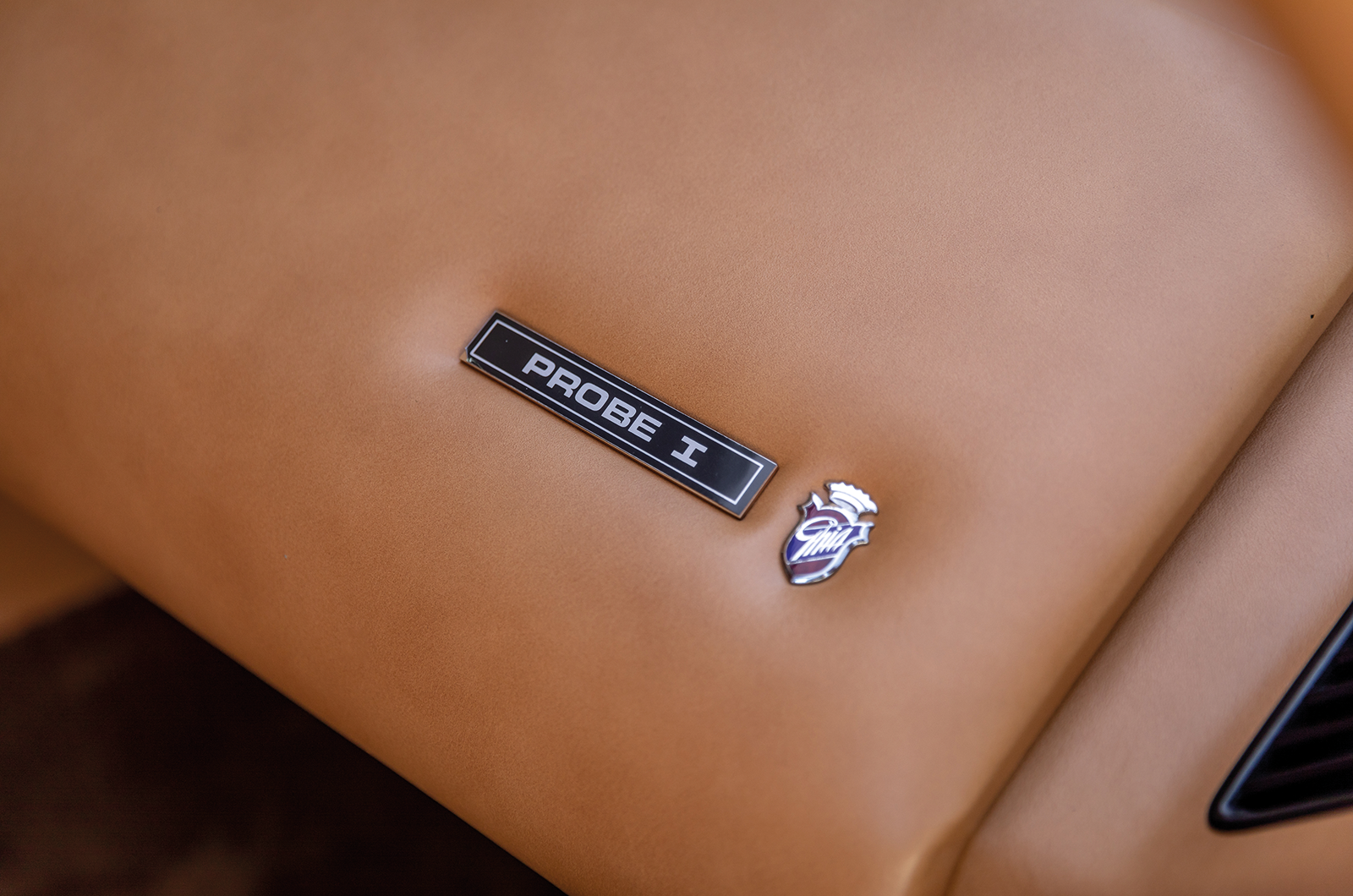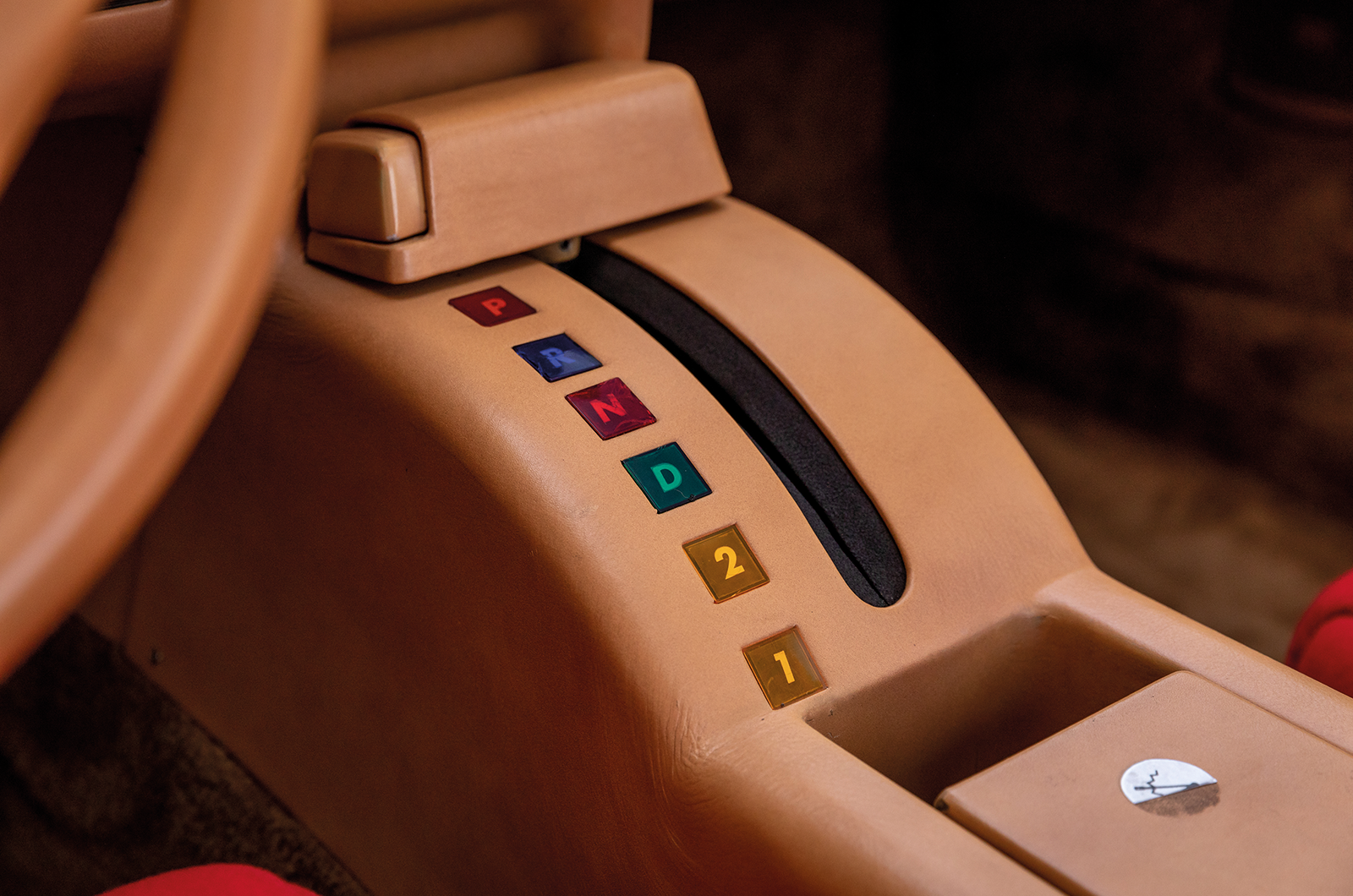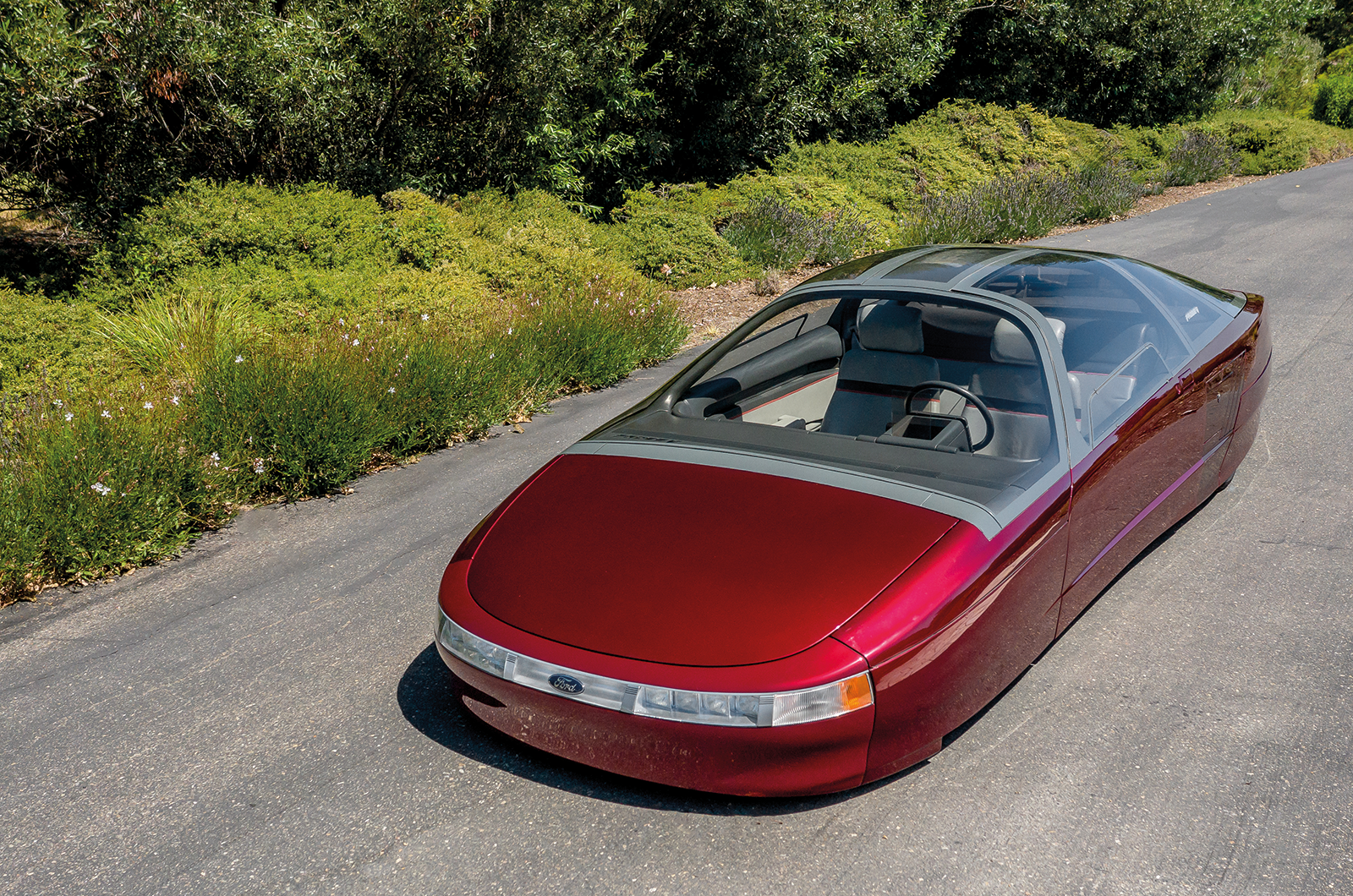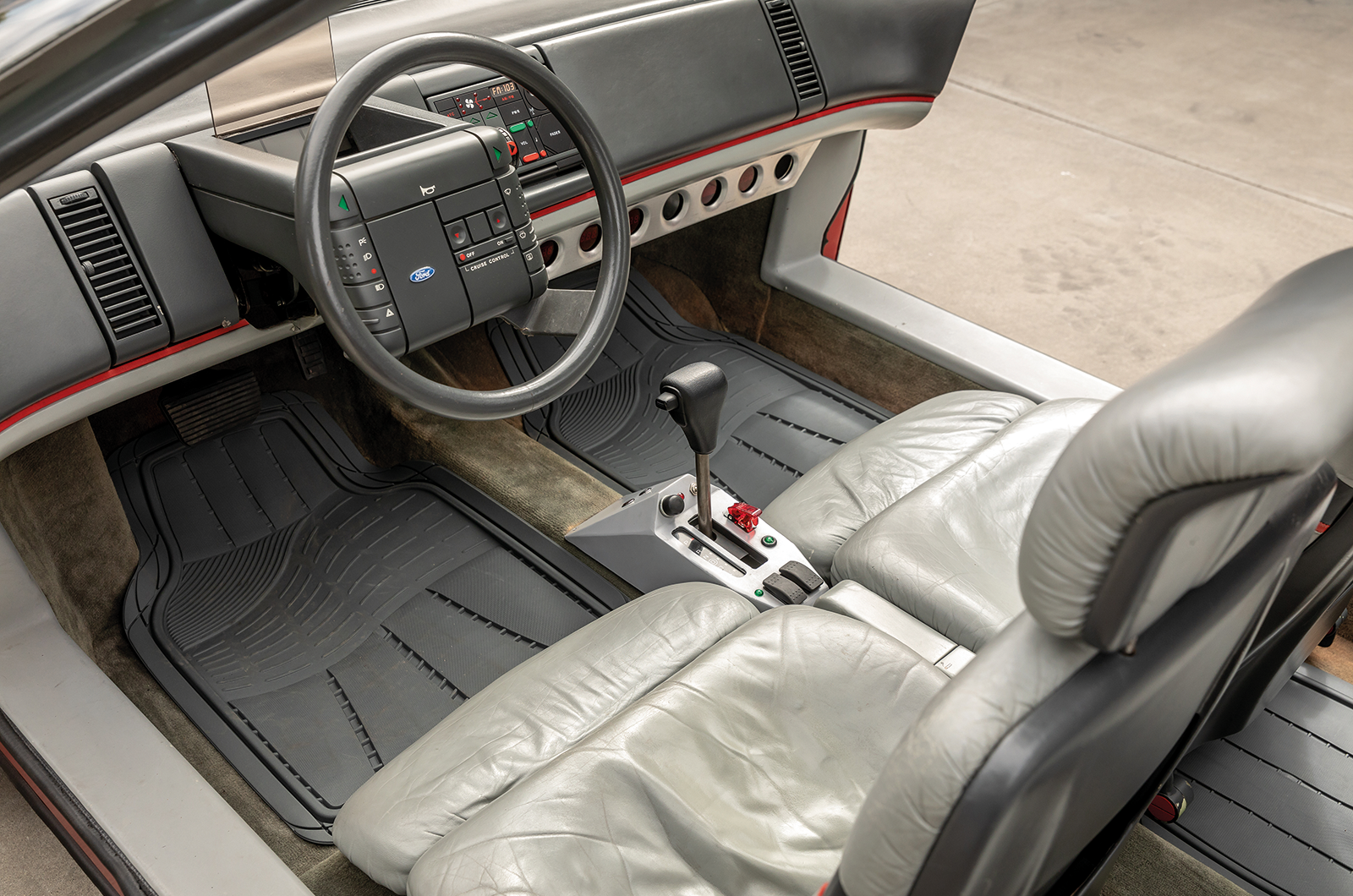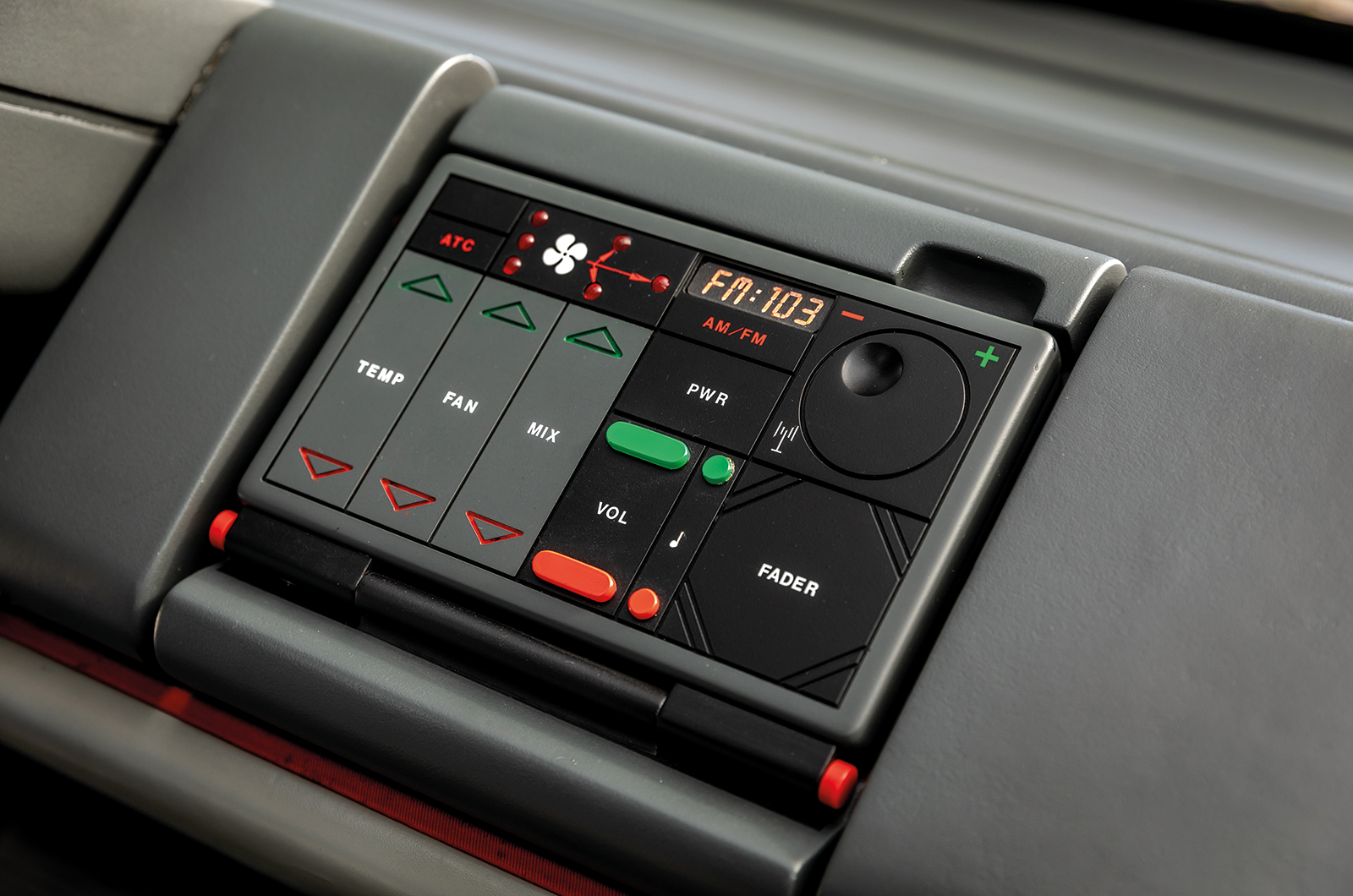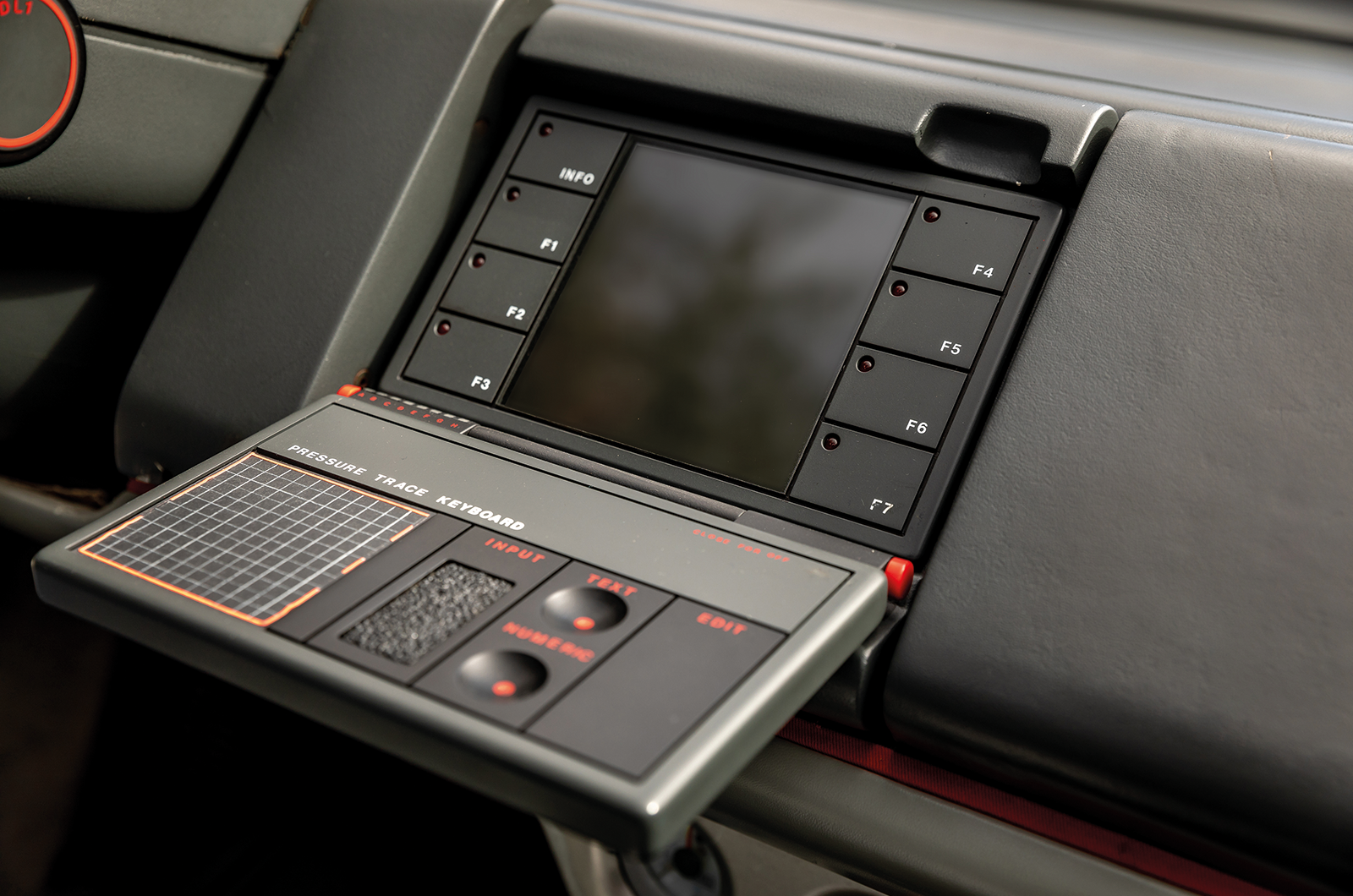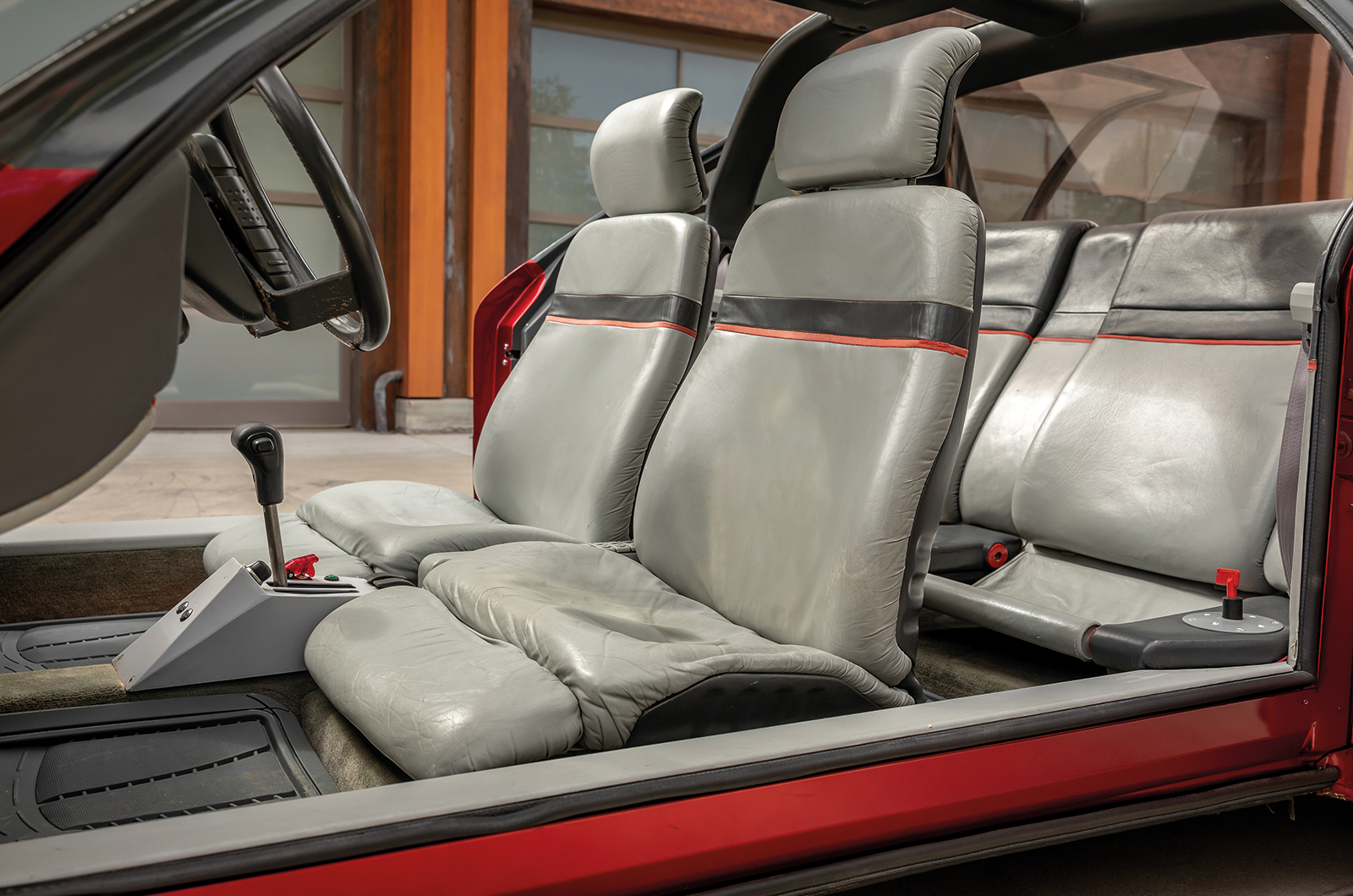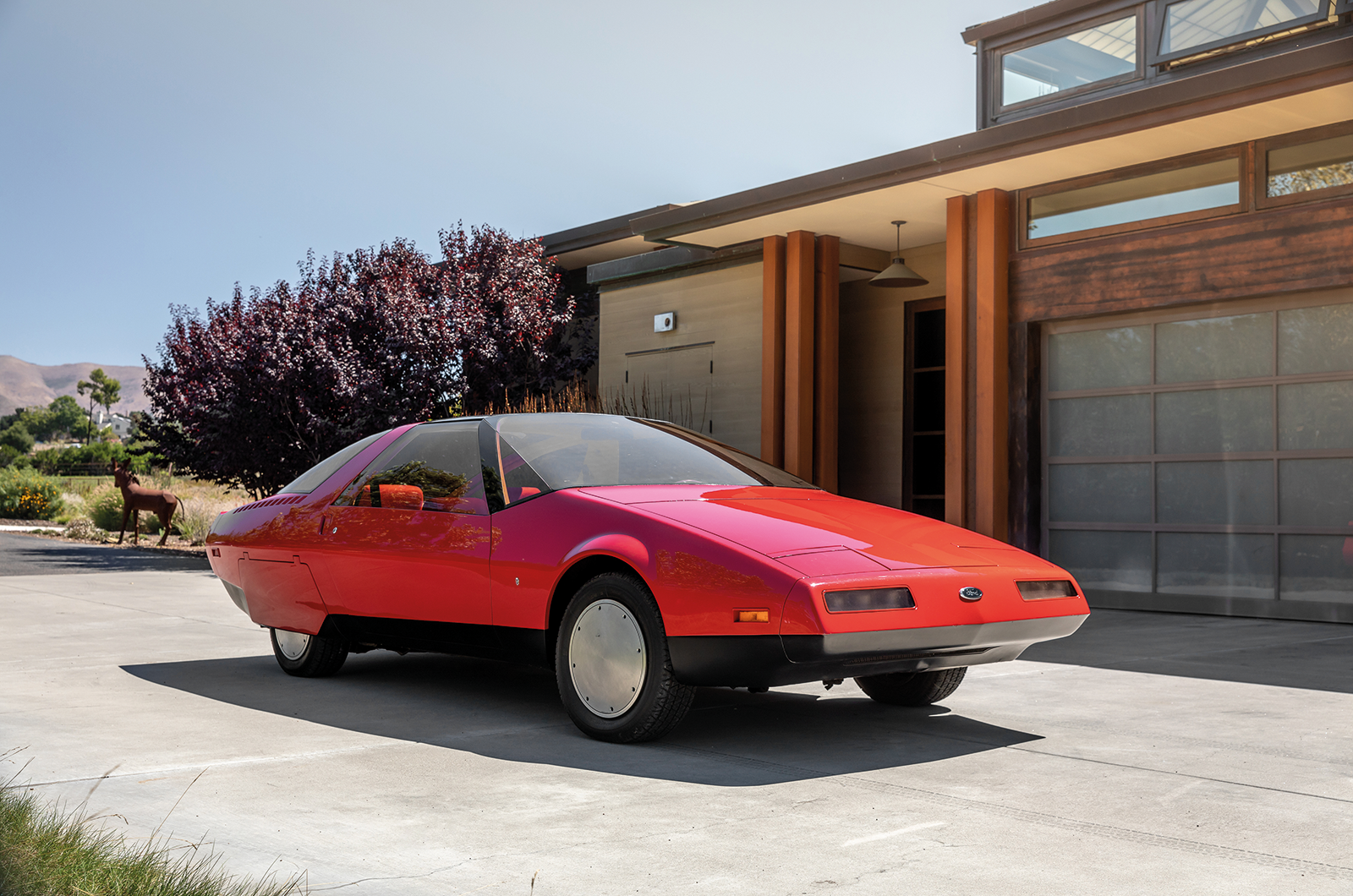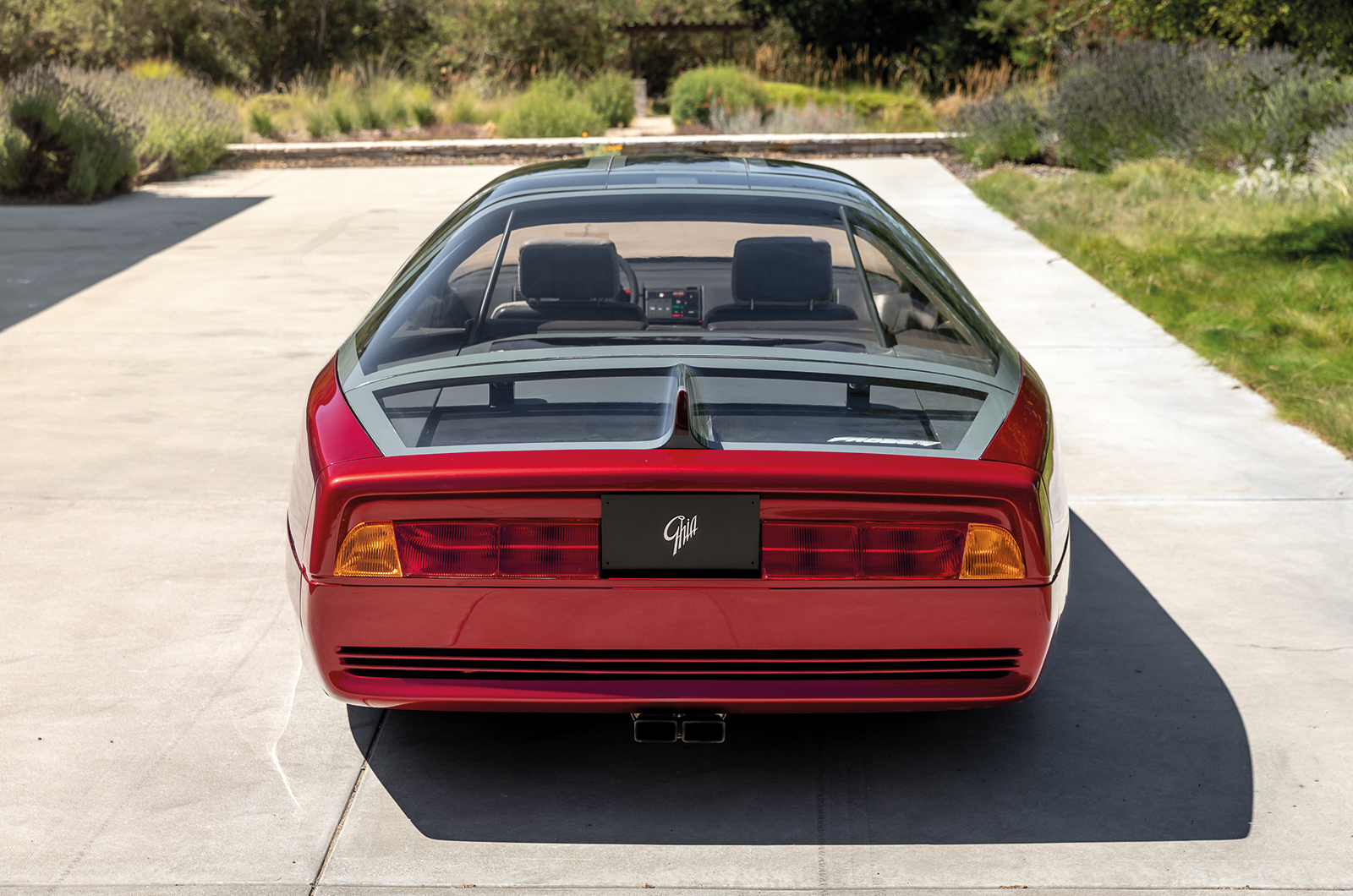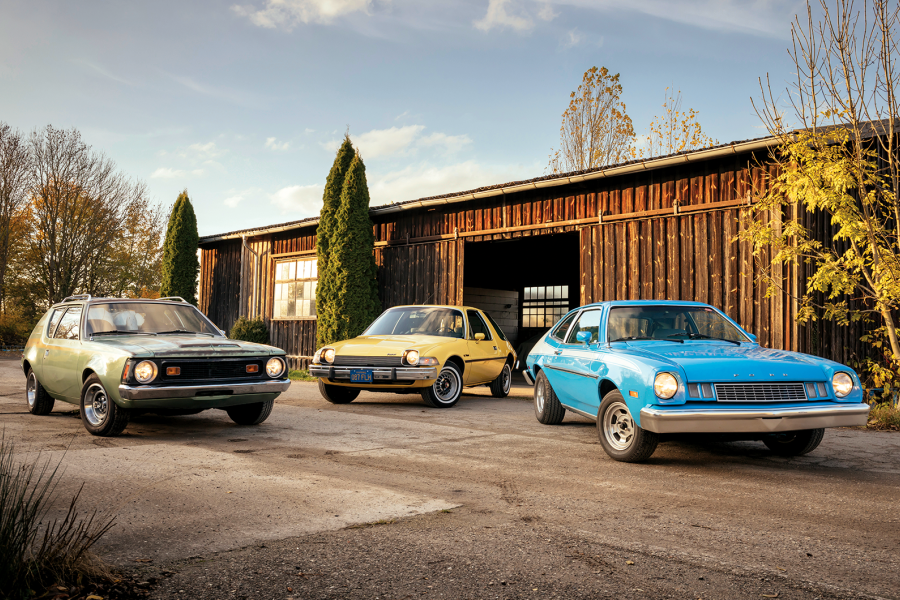“When I heard through the grapevine that an auction of Ford designs was going to be taking place in Dearborn, I asked Winston what he thought were the most important designs of the sale.
“He told me that he thought Probe I was probably the most significant because it was the first serious expression of Ford’s ideas regarding aerodynamics, and also because it represented the rebirth of the American ‘Dream Car’.”
There was no buyer’s remorse following the cars’ purchase, either, just the small matter of how best to look after them.
The slippery profile of Ford’s Probe V concept
“I judge the Postwar Preservation class at Pebble Beach,” Grundfor explains. “Original cars in great condition should be dealt with in such a way that retains every bit of original quality, from the surface to the mechanics. The Probes remain in their original condition.
“They certainly needed attention in the form of basic detailing, and required some mechanical attention to get the original drivetrains running properly again because they had been in storage for some time.
“Each of the cars I purchased that day were, I’m afraid to say, not very well presented or, for lack of a better word, ‘clean’.
“Each was treated to a full conservation regimen when I got my hands on them. Of course, there are no parts available in general for one-of-a-kind vehicles – for example, during shipment from Dearborn to California after the sale, the centre light-bar lens on Probe V was broken. We had to learn how to form Plexiglas as well as making tooling to accomplish that.”
It is pure ’80s inside Probe V
Of the two concepts, Probe I is the most conventional, but it’s all relative.
The styling anchors it in the late 1970s, not least because it has drag-inducing pop-up headlights, but the interior is something else entirely.
There’s an odd mix of the mundane and the exotic, here. The padded steering wheel appears positively ordinary, as though it was lifted from a parts bin, although it boasted a more radical tiller when first displayed 41 years ago; one that didn’t feature a centre column and had a circular instrument panel just ahead of it. And, naturally, it boasted digital instrumentation.
You can, however, imagine driving Probe I. It still looks like a car.
Probe I’s dart-like shape looks aerodynamic even when not moving
The Probe V, in contrast, appears to have crash-landed from a different planet.
Ford envisaged it as being ‘…a 2+2 mid-engined sports car’, but it’s more kinetic sculpture than automobile – it is drivable, too.
Even the method of entry appears positively sci-fi: the doors pop out away from body on parallelogram hinges and slide rearward
And, once aboard, there’s a telescoping digital instrument pod and steering wheel, with overhead console and head-up displays for the speedometer and ‘systems check’.
V’s Mustang rear lights stand out
It is also the car that perhaps cast the longest shadow, if only through its longevity as a show queen.
Most concepts tend to be seen a few times before disappearing from view.
Ford was still displaying Probe V as late as 1989, when it was exhibited at the Paris Motor Show.That speaks volumes.
The passing of 35 years hasn’t lessened its impact, either.
Images: TED7
Thanks to Scott Grundfor
READ MORE
Queen of the Desert: Golden Sahara II
$14.8m hammer price for Alfa’s BAT cars
Shrouded in Turin: Frua’s unique Jaguar S-type
Richard Heseltine
Richard Heseltine is a long-time contributor to Classic & Sports Car

